
Winning at the game of local search and local SEO can seem like an insurmountable task, with the best practices and search engine’s (okay, predominantly Google’s) algorithmic demands constantly changing. However, here at Energy Circle we’ve discovered a few key strategies that can help enhance your overall searchability. In a recent webinar, CEO and Founder Peter Troast discussed all of the changes taking place at search giants Google and Apple—and what that means for your business’ local SEO strategy. Read on to discover what this may mean for your solar, HVAC, home performance, or better building sector industry.
Game Over: The Dominance of Google My Business
The Stunning Rise of GMB as a Lead Source
Back in the day (way back, like in 2014), your search presence depended more directly on a broad spectrum of websites that Google would examine to try to triangulate information about local companies. It was their way of figuring out if a local company was a legitimate business. Over the years, we’ve talked about how being present in all of these directories was crucial, and how being religiously consistent about your data (such a phone number and business address and URL) was integral to your success.
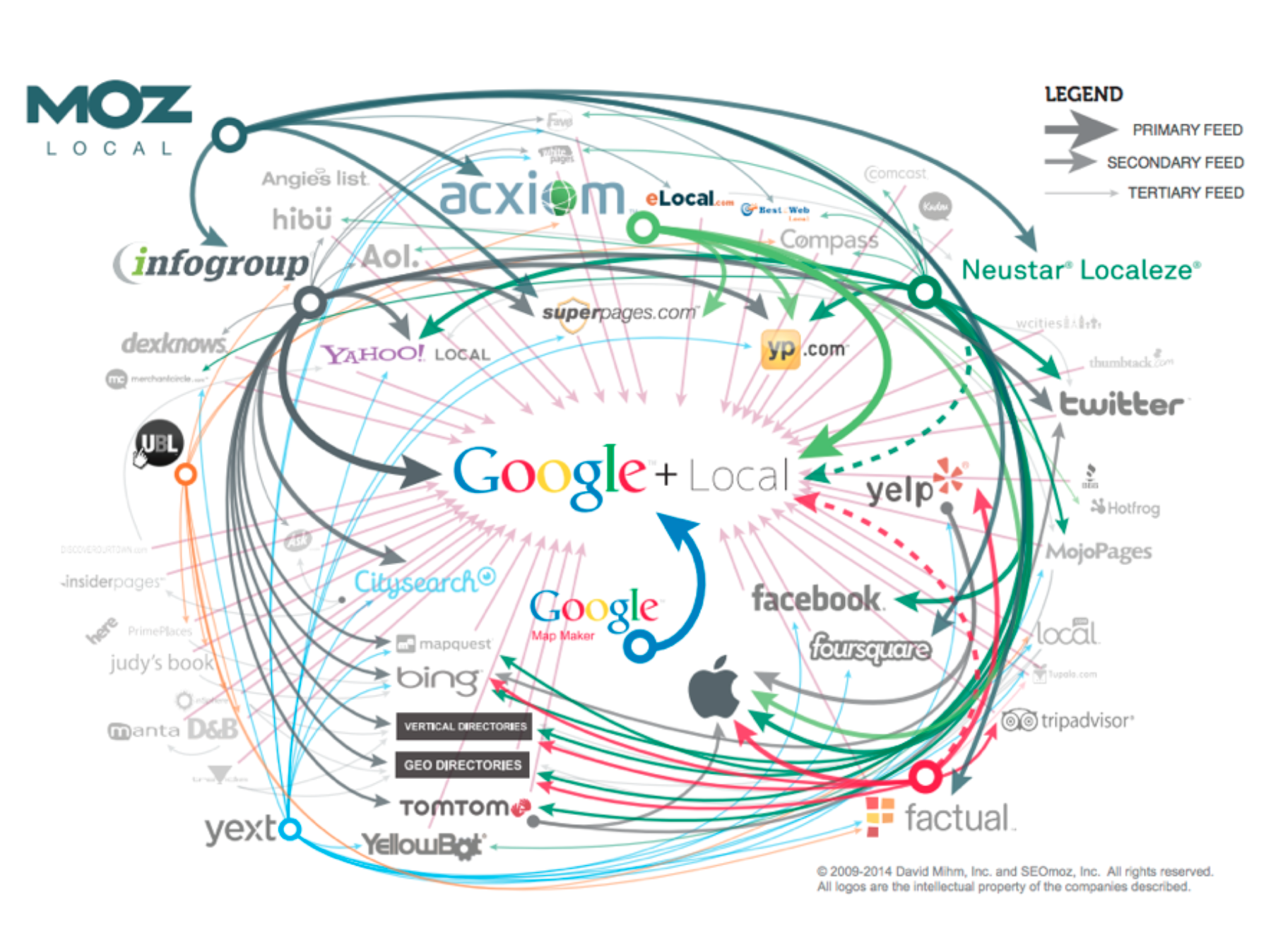
An intricate network of website listings used to be crucial to maintaining an online presence in local search. This is no longer the case.
Fast forward to today, and Google My Business (GMB) is the primary source of company data. What seems like all of a sudden (but has actually taken years to accrue), Google has its own ecosystem, and can source and cite on its own the most trusted and verified information about a company—without information required from other websites and directories. “Getting citations” — while not completely obsolete, is mostly a thing of the past due to GMB’s ubiquity and how much information about your company exists within the GMB dashboard.
We’ve discussed Google My Business frequently during our webinars and in our blogs, and that’s because it’s undeniably as useful as it is impactful—and offers a high return on investment if it’s executed correctly. We’re slowly realizing the incredible dominance of GMB in the local search environment in terms of the number of leads coming through GMB before even landing on your website. It is starting to seem like “game over,” and Google has won.
There is an enormous amount of traffic being driven from GMB directly to businesses. This can happen when someone searches for your company name (organically by entering it into the search bar) and selects your company through either the Knowledge Panel that appears on the right hand side of the screen, or contacts you based off of your Google Maps listing. This type of traffic is known as “zero click” contact—wherein users never click-through to your website, but contact you directly through your Google My Business profile. The Discovery Search function also helps people find your business when they search for keywords, i.e. “insulation,” or “energy audit,” relevant to your services—not only when they’re searching for your company name.
The impact of these Google-only, zero click searches cannot be overstated. Taking a look at an Energy Circle client’s summer marketing performance, you can see that they are fairly close to 50% zero click traffic and 50% website traffic. This client’s traffic from GMB is up 27%, conversions are up 27%, and impressions are up 59% in just three months. This is the kind of massive GMB contact growth we’re starting to see across many companies. Despite the many means that people have to search for information, Google remains on the rise.
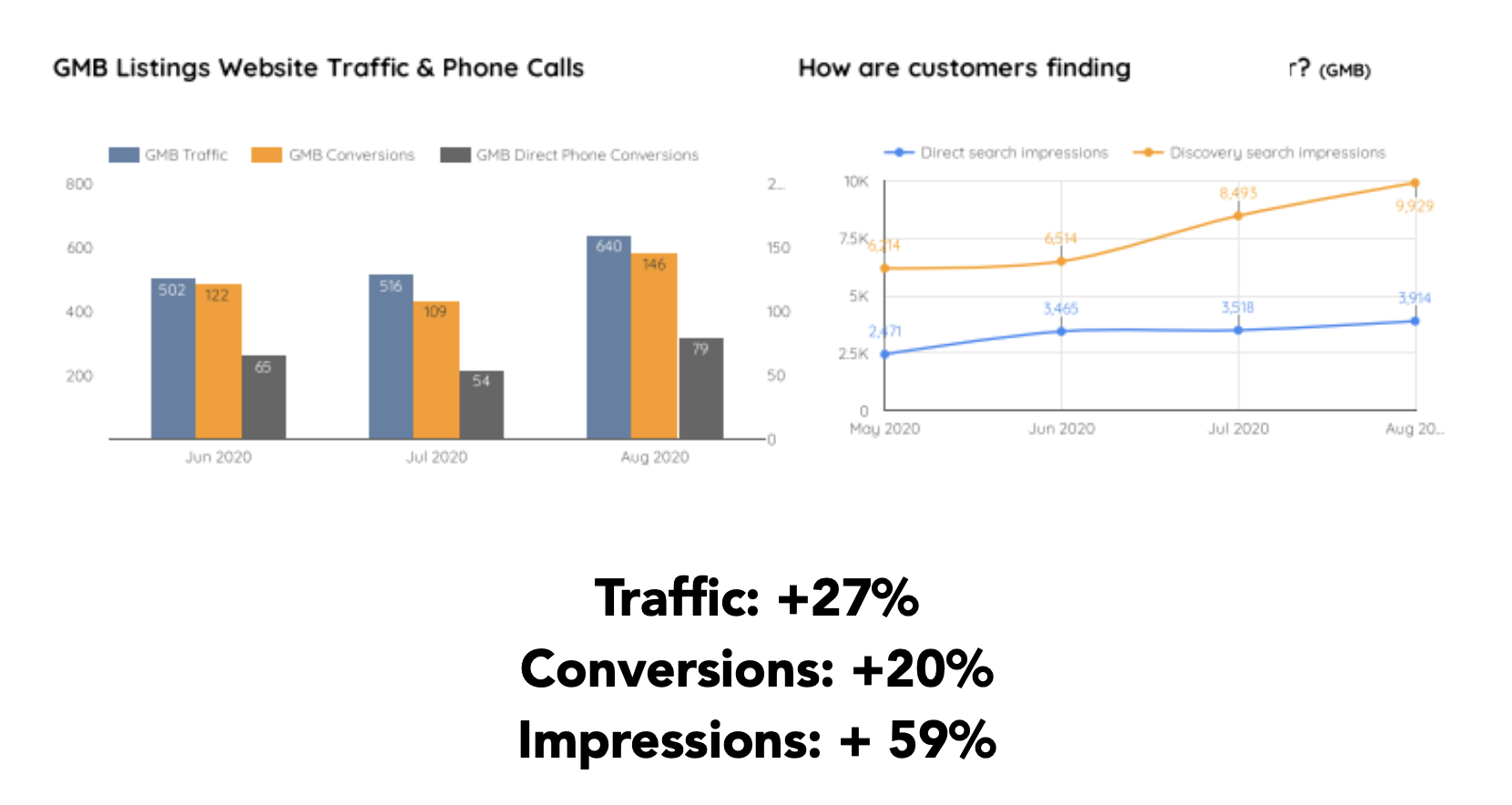
This client’s GMB traffic increased noticeably within only three months of performance.
A word of caution, however, before you discontinue updating your directory listings entirely in favor of feeding Mother Google (we still recommend you do this as a best practice, for consistency). There are two sets of directory types: local business directories, such as chamber of commerce websites, and those that are industry relevant (for example, the Department of Energy’s Home Improvement Experts program). While the entire ecosystem of generic citations is not as important anymore, these two types of directories are still important and useful.
But Wait… What Is Apple Up To?
With the advent of Apple’s newest iPhone iOS rollout, which occurred just a few weeks ago, a new competitor was introduced into the local search landscape, as the Apple Maps feature launched the capability to rate locations natively as well as the ability for users to upload photos to the app. Formerly, Apple Maps utilized ratings and reviews from Yelp and TripAdvisor, but this update indicates that the home of the Mac is bringing local search aggregation more in-house.
While Apple Maps dictates that to register your business you must have a ‘storefront location,’ it is fairly easy to register your business, without many of the hoops required by Google My Business to verify your business’ credibility.
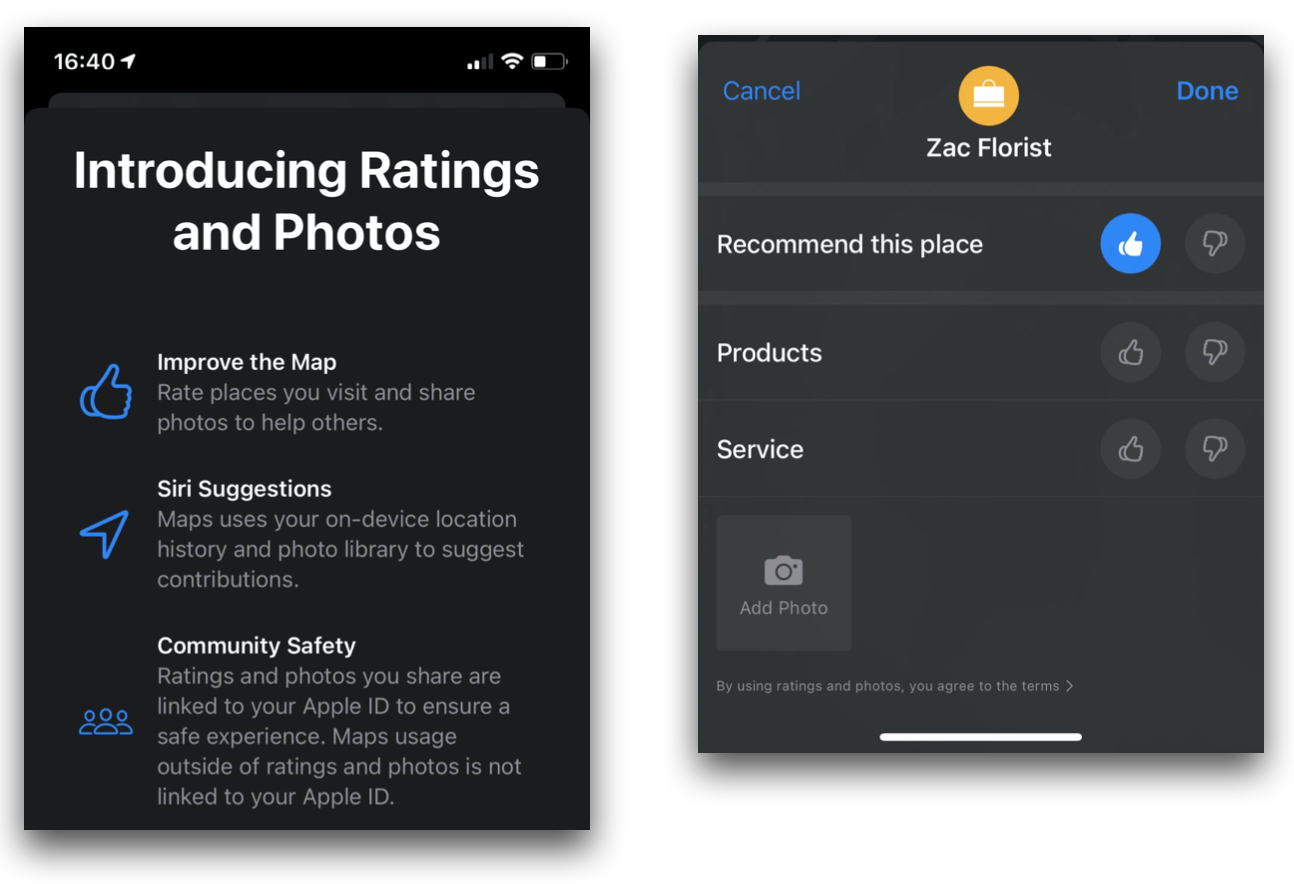
With the advent of iOS 14, Apple Maps has entered the local search arena with its own means of reviewing businesses and adding business photos.
Apple Maps’ move away from relying on Yelp data to support its local search ratings corroborates suspicions that Yelp is on the decline—removing yet another competitor from the local search landscape. The Yelp Q2 financial report indicated that annual growth continues to decline, as does Yelp-related traffic, as experienced by at least one Energy Circle client.
What It Means and How You Should Respond
Own and Perfect Your Listing
Ensure that your Google My Business listing information is accurate and updated. This information should include your address, business categories, your service area, services and subcategories, products, hours, COVID-19 protocols and policies, and last but not least: photos. We also recommend that you use a tracking phone number and URL in the website displayed on Google My Business so that you can track your phone calls and website visits directly attributed to Google My Business.
Review Volume and Velocity
Actively solicit reviews from your customers, ensuring a consistent flow of recent reviews from active customers. Google is your priority channel to focus on, but you should also feature reviews on your website. While Facebook and Yelp are still on the list, they are slowly diminishing in terms of the need for constantly ‘feeding’ your rankings with updated reviews. However, they cannot yet be ignored. As mentioned earlier, don’t forget local and business directories. Our prevailing wisdom offered regarding the number of reviews that should be featured on Google has almost doubled across the board in some sectors within the last year—proof-positive of the ever-increasing importance of review solicitation.
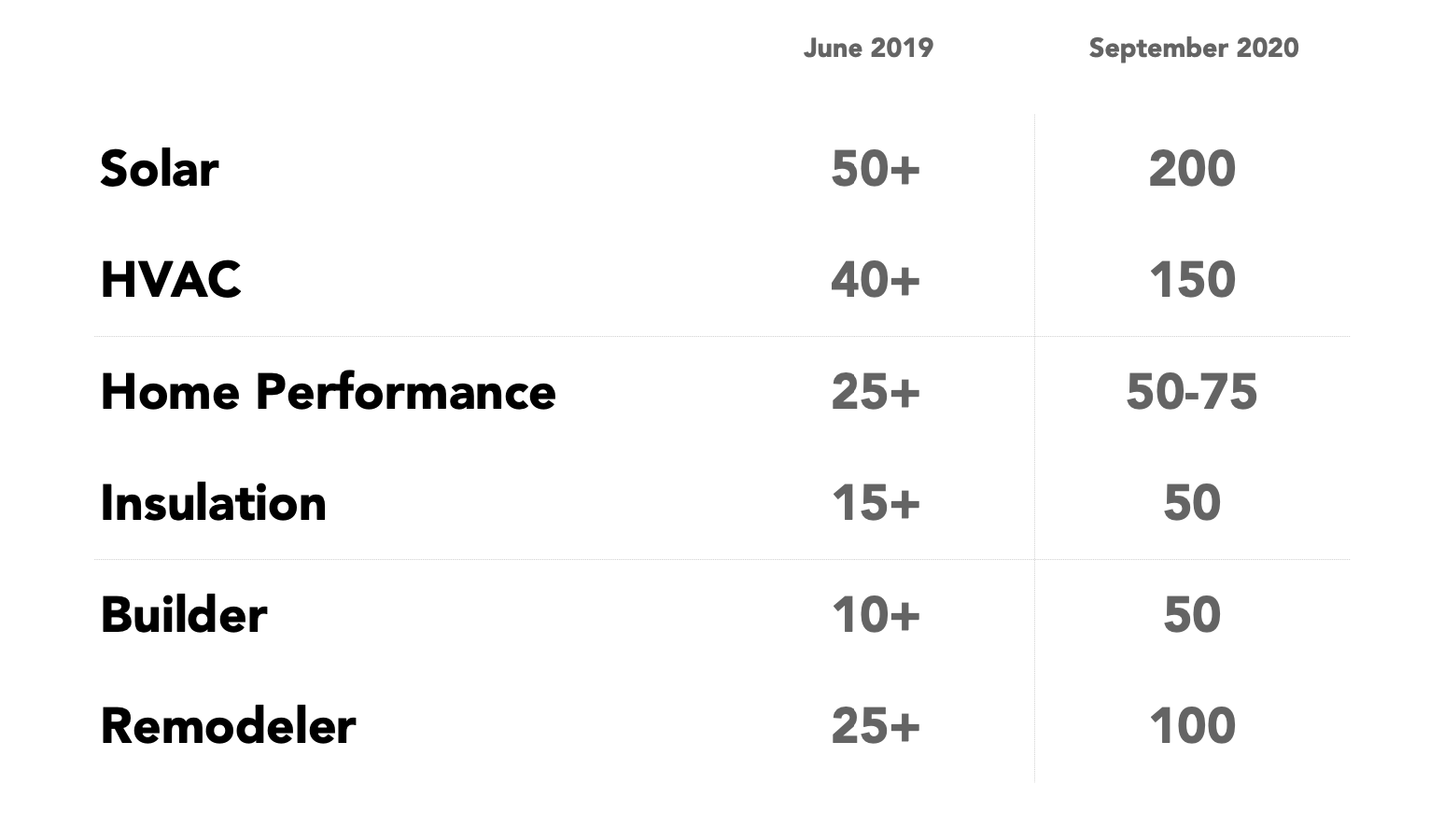
Each industry has its own recommended number of reviews for maximum impact on local search results.
Review Content and Attributes
Google reviews now feature review attributes—allowing you to select which features of the services you received you’d like your review to focus. Higher-rated reviews focus on which elements of your experience you liked, while lower-rated reviews ask which elements of your experience you disliked. Google also mines your reviews for content to inform what these attributes are. Because of this, it’s important to attempt to guide reviewers to leave reviews specific to their experiences, focused on specific services or interactions.
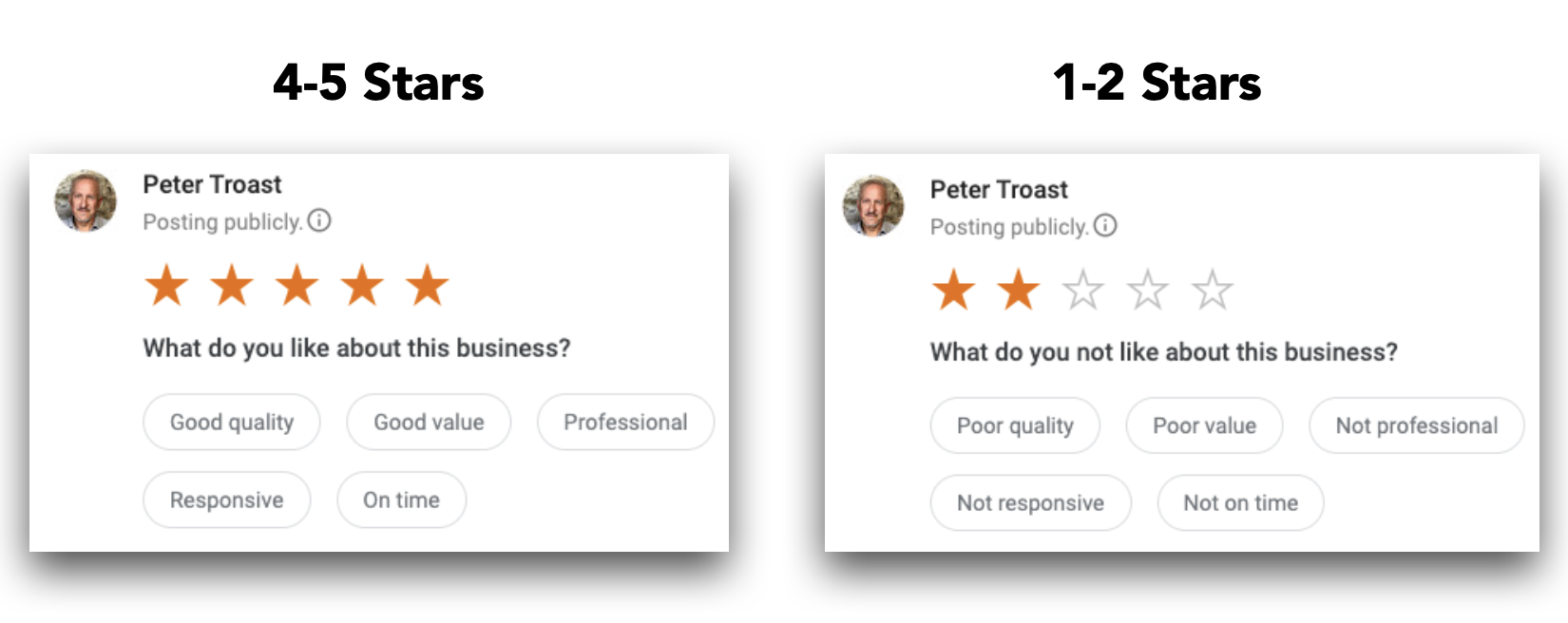
Review attributes offer customers a means of honing in on what they did or did not like about a business experience.
Engagement
We’ll discuss engagement more in an upcoming webinar on this subjective metric and its importance to Google, but there are a few key ways to indicate engagement to Google. Review responses are a great means of asserting your customer engagement—a key driver to this element of Google’s search ranking based on this metric. Using the Google quote or messaging features are a great means of offering quick, responsive interactions to your customers. We’ve discussed utilizing the question and answer function before, and it’s a great way to inform customers about your business as well as indicating engagement. Make sure you update your weekly Google My Business posts as well.
Anything goes when using this function. While promotional posts are recommended, sometimes those aren’t always viable, so you can also use GMB posts to highlight blogs or other website content, seasonal specials, or other general information you want to share. As we mentioned above in ensuring that your GMB information is accurate and updated, make sure you’re uploading recent photos regularly. To drive engagement, you can set up a weekly best practice checklist to include:
-
Receiving and responding to reviews
-
Answering messages and quote requests
-
Add one new question and answer per week
-
Add one new GMB post per week
-
Add one new photo to your GMB profile
It remains to be seen what impact Apple’s move to take business ratings and reviews in-house will have on the overall local search landscape—or whether it will provide true competition to Google My Business and its domination of local search. However, it’s obvious that the zero click search movement is here to stay, and its impact on both company’s web presences and other elements of local SEO is undeniable. Keeping your company’s presence across all platforms updated and accurate is one rule that is unchanging and essential to success as these trends evolve—and will help you successfully ride the local search wave.